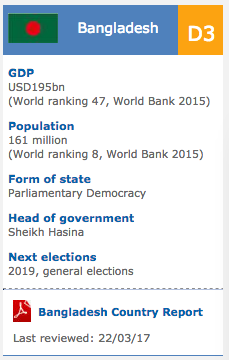Saudi Arabia: Saudi Arabia Agriculture Profile 2012
2012/03/30
Saudi Arabia Agriculture Profile 2012
Reference Date: 5-May-2011
|
FOOD SECURITY SNAPSHOT
|
Wheat production gradually phasing out
Harvesting of 2011 wheat and barley crops has just started and production is expected to decrease further following the adoption of the 2008 decree that aims at gradually phasing out all water-intensive agricultural crops by 2016, including wheat. The government intends to maintain the guaranteed purchase price for locally grown wheat at USD 267 per tonne until 2016. To save water, the country also stopped subsidies to barley production in 2003.
High cereal import requirements in 2010/11
Cereal import requirements in 2010/11 are forecast at a high level of about 12 million tonnes. To maintain current consumption levels and with the aim to gradually expand national reserves to one year’s needs, the country’s wheat imports in marketing year 2010/11 (July/June) are forecast at 1.8 million tonnes. Imports of barley and maize, mainly used for feed, are forecast at 6.7 million tonnes and 2.2 million tonnes, respectively. Import requirements of rice are forecast at an average level of about 1.2 million tonnes.
08/12/2010 Wheat production gradually phasing out
 The sowing of the wheat crop to be harvested in April-May 2011 is about to start. Cereal production in 2010 is estimated at about 1.1 million tonnes, 23 percent down on 2009. The reduction follows the adoption of the 2008 decree that aims at gradually phasing out all water intensive agricultural crops by 2016, including wheat. The country will compensate the reduction in local wheat production by increasing imports. The government intends to maintain the guaranteed purchase price for locally grown wheat at USD 267 per tonne until 2016. To save water, the country also stopped subsidies to barley production in 2003.
The sowing of the wheat crop to be harvested in April-May 2011 is about to start. Cereal production in 2010 is estimated at about 1.1 million tonnes, 23 percent down on 2009. The reduction follows the adoption of the 2008 decree that aims at gradually phasing out all water intensive agricultural crops by 2016, including wheat. The country will compensate the reduction in local wheat production by increasing imports. The government intends to maintain the guaranteed purchase price for locally grown wheat at USD 267 per tonne until 2016. To save water, the country also stopped subsidies to barley production in 2003.
Early forecast of cereal import requirements in 2010/11 at record levels
 The cereal import requirement in 2010/11 is forecast at record 11.9 million tonnes. To maintain the annual wheat consumption requirement levels at some 2.6 million tonnes, the country’s wheat imports in marketing year 2010/11 (July/June) are likely to reach a record 2 million tonnes. In 2016, when wheat production is expected to be phased out, imports of wheat are expected to exceed 3 million tonnes. Imports of barley and maize, used mainly for feed, are forecast at 7 million tonnes and 2 million tonnes, respectively. The good pasture conditions in Northern areas of the country may result in some import reduction of coarse grains. Import requirements of rice are forecast at an average level of 900 000 tonnes.
The cereal import requirement in 2010/11 is forecast at record 11.9 million tonnes. To maintain the annual wheat consumption requirement levels at some 2.6 million tonnes, the country’s wheat imports in marketing year 2010/11 (July/June) are likely to reach a record 2 million tonnes. In 2016, when wheat production is expected to be phased out, imports of wheat are expected to exceed 3 million tonnes. Imports of barley and maize, used mainly for feed, are forecast at 7 million tonnes and 2 million tonnes, respectively. The good pasture conditions in Northern areas of the country may result in some import reduction of coarse grains. Import requirements of rice are forecast at an average level of 900 000 tonnes.
- Saudi Arabia News
-
- SAUDI ARABIA: Saudi Arabia detains critics as new Crown Prince consolidates power
- AFGHANISTAN: UNWTO: International tourism – strongest half-year results since 2010
- IRAN: Saudi Arabia denies warming relations with Iran
- UNITED STATES: Saudi King to visit White House in 2018
- SAUDI ARABIA: Yemen: Saudi Arabia 'should fund all humanitarian aid'
- SAUDI ARABIA: Three decades later, Saudis get their first concert
- Trending Articles
-
- CHINA: China welcomes Guinea to take part in Belt and Road Initiative
- CAMEROON: Poor End of Year Results for Cameroon Students
- CHINA: Chinese-supported infrastructure projects change Zambia's landscape
- UGANDA: Ugandan Govt Starts Verifying International Academy Teachers
- AUSTRALIA: Queensland Bauxite Gains State Approval of Mineral Development Work Program
- UNITED STATES: Spotify, Hulu target students with discounted bundle






.gif?1338940414)


